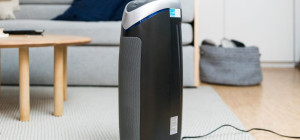 Who would have thought that in spite of all the modern living solutions afforded by smart home devices, we’d just as quickly find a way to make life more cumbersome? Granted, it’s likely a bigger problem for some than it is for others, but the simple fact that it exists could understandably be enough to persuade some fence-straddling homeowners to shy away from the smart home. To be fair, the issue we’re skirting around is being dealt with, it’s arguable that we’re still a ways from a universal solution.
Who would have thought that in spite of all the modern living solutions afforded by smart home devices, we’d just as quickly find a way to make life more cumbersome? Granted, it’s likely a bigger problem for some than it is for others, but the simple fact that it exists could understandably be enough to persuade some fence-straddling homeowners to shy away from the smart home. To be fair, the issue we’re skirting around is being dealt with, it’s arguable that we’re still a ways from a universal solution.
If you haven’t guessed by now, we’re talking about remote controls and how the installation of smart home technology is increasing the household supply of these dated command consoles and with it, the clutter, and stress levels of homeowners.
Smart Home Movement: In a Nutshell
The Internet of Things (IoT) is driving the smart home movement. The IoT, along with the technology that allows previously innocuous appliances (think fridge, lamp, ceiling fan, and door lock) connects these devices to a network. Here, they collect and share data, can be programmed to operate automatically, and even learn your personal preferences. This connectivity between devices is unquestionably making life easier – except for those that require their own remote controls. Imagine how quickly that convenience would erode if each came with its own control device no matter how small? Owning even half a dozen smart home devices would become unwieldy to say the least.
Before we delve too quickly into the solution (yes, there is one), let’s take a look at some of the most widely used smart home devices currently installed in millions of homes around the world.
Motorized Window Shades
Though perhaps not the most exciting of devices, motorized solar shades are incredibly versatile. Not only can they be programmed to open and close when you wake up and go to bed, they can also be programmed to open and close throughout the day to limit the amount of sunlight that enters your home. This in turn helps to keep your heating and cooling costs low and maintain a pleasant temperature within your home. Be wary of any DIY kits you might find however; the parts in a basic set of window shades weren’t designed to be motorized, meaning you could very well damage a perfectly good window covering. If automated window coverings are what you seek, it’s best to purchase a ready made set.
Nest Learning Thermostat
Another handy little device that will help you save money on your heating and cooling costs are self-learning thermostats like the one offered by Nest. After using the device for just one week, the Nest thermostat learns your preferences and adjusts itself to the prevailing season to keep your home within your preferred temperature parameters. You’ll still need to contact a contractor for cleaning and furnace repairs, but as far as operating your home’s HVAC system is concerned, a device like Nest (which is remote-free by the way) is all you need.
The ReST Bed
Who doesn’t love a good night’s sleep? While adjustable beds have been around a long time (and could only be adjusted before you fell asleep), there’s never been anything like the ReST bed. Using built-in sensors, the ReST bed senses pressure and adjusts the rigidity or softness of the mattress accordingly. It also collects data on your sleeping habits – all without the use of a remote control.
Before turning in, use the ReST app to customize the various zones of the mattress. As you sleep, your position is monitored and the bed makes adjustments to the way you’re sleeping so that you’ll feel refreshed in the morning.
Front Door Smart Locks
Forgot your keys at the office? With a smart lock, that’s not really a problem. In fact, smart locks kind of make keys in general obsolete. There are a number of different varieties currently available, some that require your fingerprint and others that can unlock when they sense you (and your smartphone) in proximity.
The devices described above are just a small sample of the kind of smart home tech that’s available. As you can see, it’s getting easier and easier to find smart home devices that can be used without a remote – but the lack of a remote control doesn’t mean that smart home devices simply become convenient to use; many require the user to access them through a proprietary app (this effectively swaps out a physical remote control for a digital one).
The solution is of course the incorporation of a hub – a singular platform that will let you access and controls all of your integrated devices in one easy to navigate space. But hubs can accomplish so much more than that. Imagine being able to create “zones” within your home where lighting, heating, and other devices work as one profile? Individually smart home devices are great, but its not until they become incorporated into a larger framework that they truly become “smart”.







